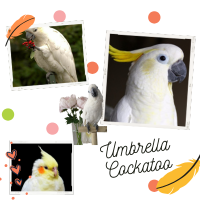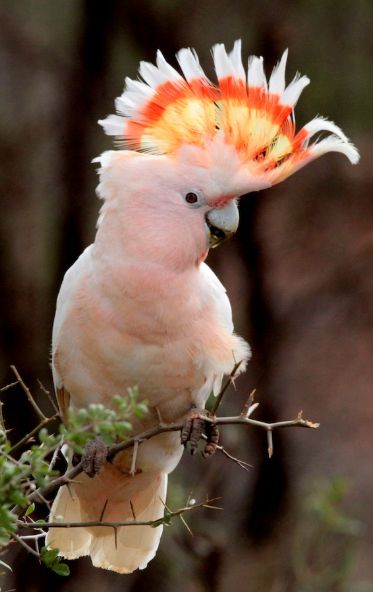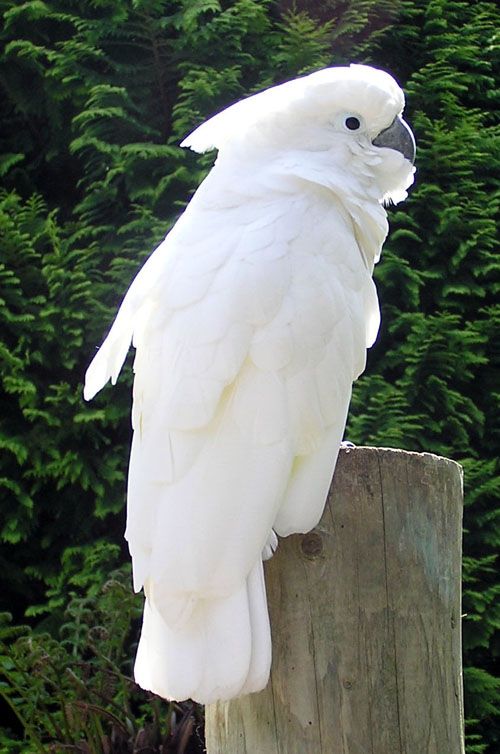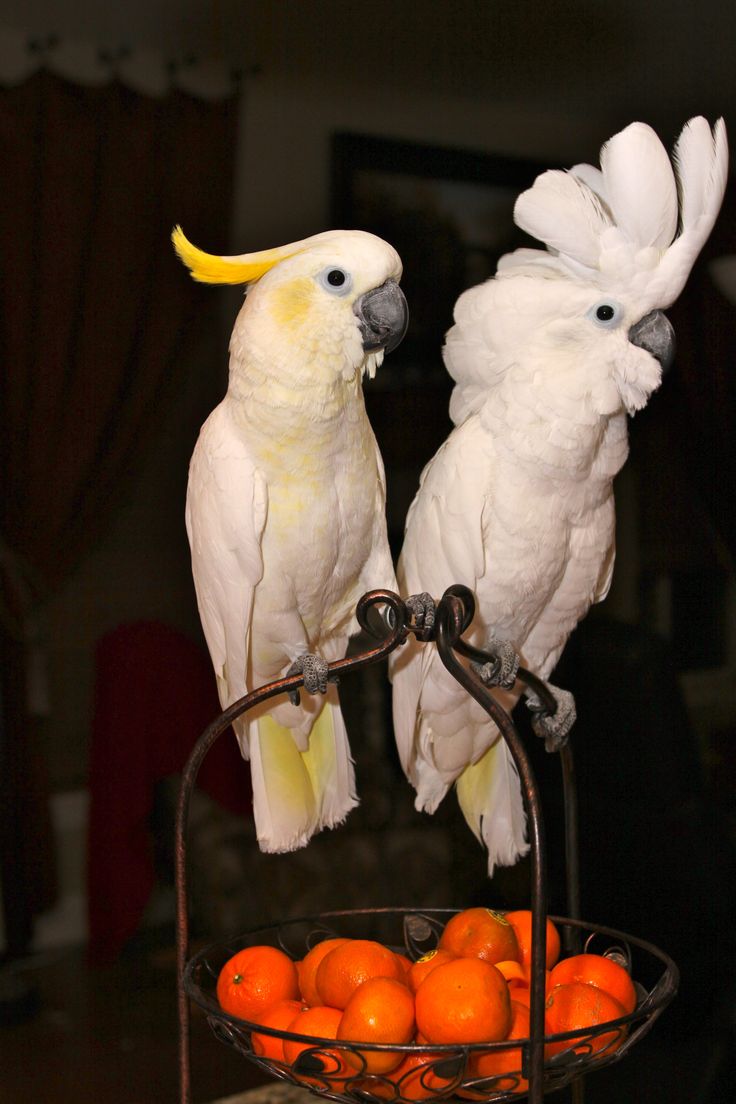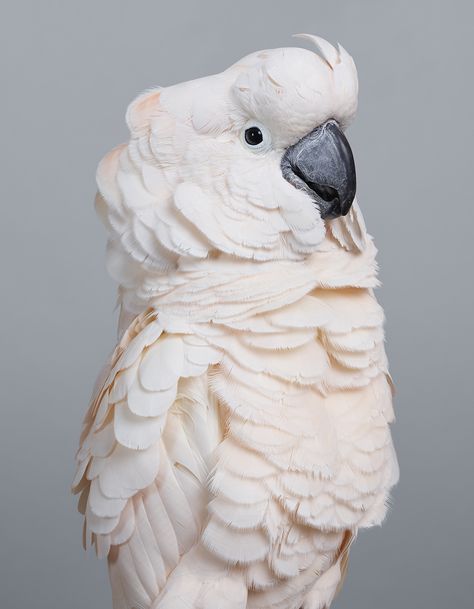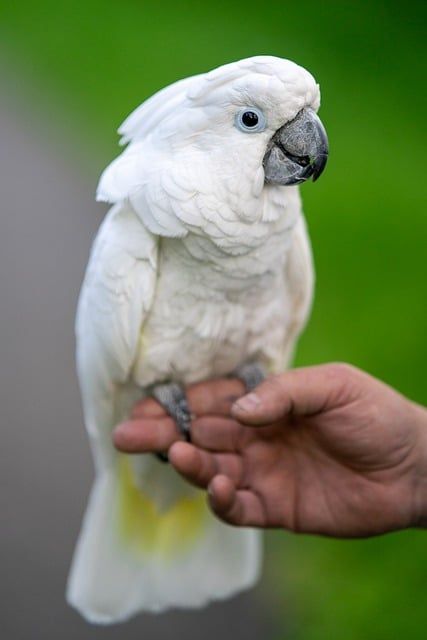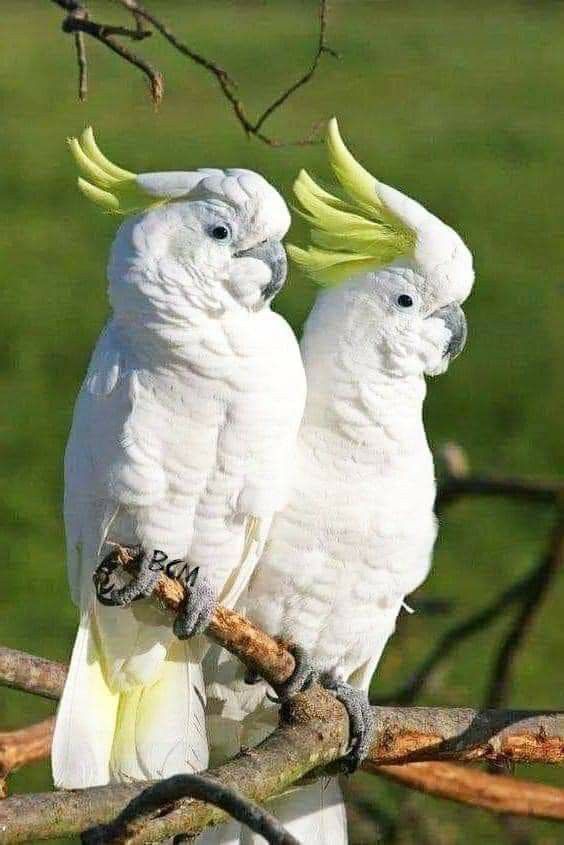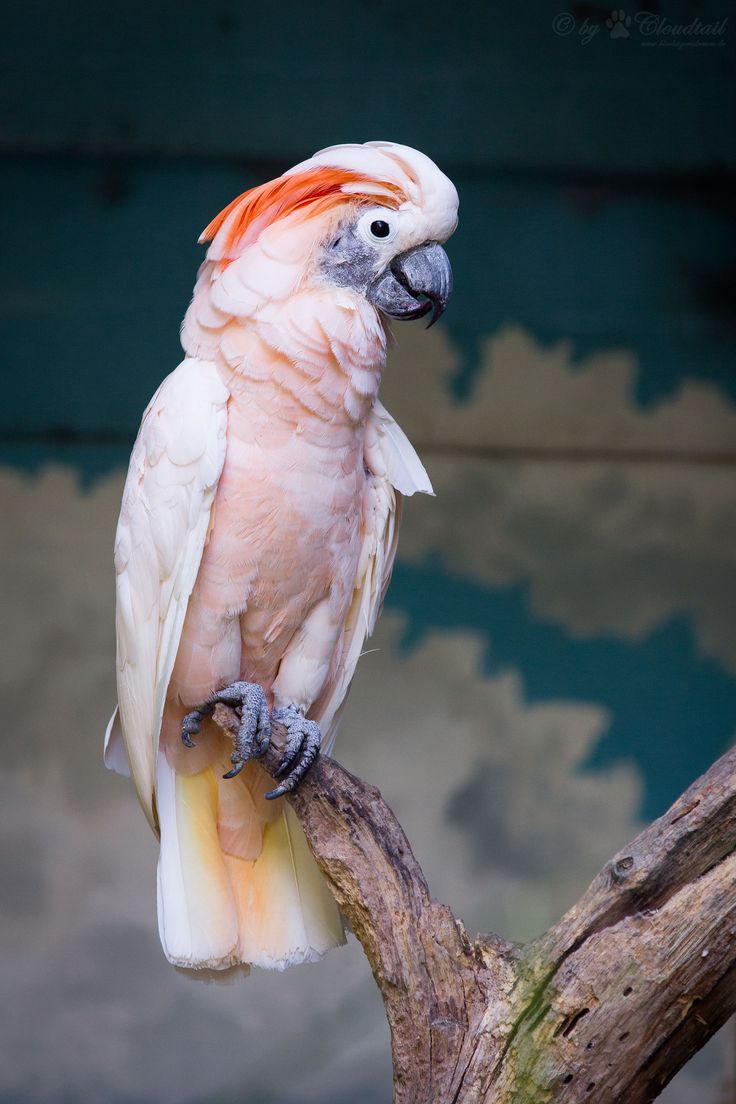Umbrella Cockatoo scientifically known as Cacatua alba, is a captivating bird renowned for its intelligence, affectionate nature, and striking white plumage. This article delves into the world of umbrella cockatoos, covering their characteristics, behavior, care requirements, and much more. Whether you’re considering adopting one or simply curious about this enchanting bird, this guide will provide you with all the information you need.
A female Umbrella Cockatoo
A female Umbrella Cockatoo is a member of the species Cacatua alba, known for its striking white feathers and prominent crest that can be raised or lowered depending on the bird’s mood. Female Umbrella Cockatoos are similar to males in appearance, with both sexes having the same overall physical traits, such as a white plumage, a yellowish hue on the underside of their wings, and a distinctive crest that opens up like an umbrella when the bird is excited or alert.


In terms of behavior, female Umbrella Cockatoos tend to be affectionate, social, and can develop strong bonds with their human caregivers or other birds. However, like all cockatoos, they require a lot of attention and mental stimulation to prevent behavioral issues like screaming or destructive chewing. During breeding season, females may display nesting behaviors, and they can lay eggs if paired with a male. Female Umbrella Cockatoos generally have the same care requirements as males, needing a balanced diet, social interaction, and a safe, spacious environment to thrive.
Overview of the Umbrella Cockatoo
The umbrella cockatoo is a large, white cockatoo native to Indonesia, particularly the islands of Sulawesi and the Moluccas. Known for their playful and social nature, these birds are a favorite among bird enthusiasts.
- Scientific Name: Cacatua alba
- Average Lifespan: 60 to 80 years with proper care
- Size: Approximately 18 inches in length
- Weight: 400-700 grams
Their most distinctive feature is the umbrella-shaped crest, which they raise when excited or alarmed. This trait, combined with their dark brown or reddish-brown irises, gives them a striking appearance.
Physical Appearance and Colors
The umbrella cockatoo is predominantly white, with subtle yellow undertones on the underside of its wings and tail. Their crest, a hallmark of the species, is also white, adding to their elegant look. While the typical umbrella cockatoo is white, some breeders may highlight variations, such as the elusive “blue umbrella cockatoo,” though this term often refers to lighting effects rather than true coloration.
- Brown Irises: A distinguishing feature of mature umbrella cockatoos.
- Crested Cockatoo: Their signature crest is a key identification marker.
Umbrella Cockatoo vs. Other Cockatoos
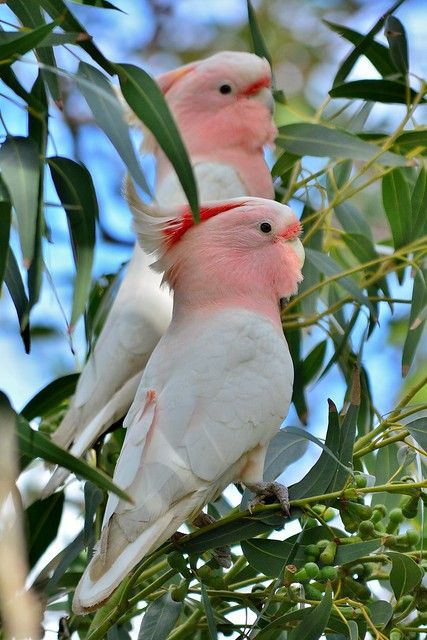
Blue-Eyed Cockatoo vs. Umbrella Cockatoo
- The blue-eyed cockatoo (Cacatua ophthalmica) is native to New Guinea and has striking blue skin around its eyes. The umbrella cockatoo lacks this feature but compensates with its larger size and prominent crest.
Goffin Cockatoo vs. Umbrella Cockatoo
- Goffin cockatoos are smaller, averaging 12 inches, and are less demanding in terms of attention compared to umbrella cockatoos.
Sulfur-Crested Cockatoo vs. Umbrella Cockatoo
- Sulfur-crested cockatoos (Cacatua galerita) are easily distinguishable by their yellow crest and more robust vocalizations.
Umbrella vs. Moluccan Cockatoo
- Moluccan cockatoos (Cacatua moluccensis) are larger and have a peach or salmon-colored crest.
Behavior and Personality
Umbrella cockatoos are known for their friendly and interactive nature. They thrive on social interaction and can form strong bonds with their owners.
- Talkative: While not as proficient as African greys, umbrella cockatoo can learn to mimic human speech and sounds.
- Affectionate: They enjoy cuddling and physical contact, making them ideal companions.
- Umbrella Cockatoo Behavior: Known for their playful antics, they can also exhibit stubbornness and demand consistent training.
- Body Language: Understanding their crest movements, vocalizations, and posture can help owners gauge their mood.
Caring for an Umbrella Cockatoo
Diet
A balanced diet is crucial for the health of an umbrella cockatoo. Their diet should include:
- Pellets: Formulated for cockatoos
- Fruits and Vegetables: Such as apples, carrots, and leafy greens
- Nuts and Seeds: In moderation
Best Food for Umbrella Cockatoo: A combination of fresh produce and high-quality commercial bird food ensures optimal nutrition.
Cage Size
The cage should be spacious enough to accommodate their active lifestyle.
- Minimum Cage Size: 36x24x48 inches with bar spacing of 3/4 to 1 inch
- Umbrella Cockatoo Cage Size: Larger cages are recommended to allow for climbing and wing-flapping.
Breeding and Lifespan
- Umbrella Cockatoo Breeding: Requires a controlled environment and a large aviary. Breeding pairs must bond before successful reproduction.
- Umbrella Cockatoo Lifespan: With proper care, they can live up to 80 years, making them a lifelong commitment.
Socialization and Training
Can Umbrella Cockatoos Talk?
Yes, umbrella cockatoo can mimic human speech, though their vocabulary may be limited compared to other parrots.
An Umbrella Cockatoo breeder is someone who specializes in breeding Umbrella Cockatoo, a species of parrot known for their striking white feathers and large, showy crest. These breeders typically focus on the responsible breeding and care of the species, ensuring that the birds are healthy, well-socialized, and properly cared for before being placed in homes or aviaries.
Umbrella Cockatoo breeders generally ensure that they meet the specific needs of these birds, including proper nutrition, socialization, and veterinary care. They may also educate potential buyers about the characteristics, care requirements, and responsibilities of owning an Umbrella Cockatoo. Ethical breeders strive to maintain genetic diversity and may follow guidelines to prevent inbreeding, ensuring the birds’ long-term health and well-being.
Training Tips
- Positive Reinforcement: Use treats and praise to encourage desired behaviors.
- Consistency: Regular training sessions are key to success.
- Behavior Management: Address screaming and biting through distraction and redirection.
Health and Well-Being
Common Health Issues
- Feather Plucking: Often due to stress or boredom
- Respiratory Problems: Linked to poor ventilation
- Obesity: Avoid excessive fatty foods
Exercise and Enrichment
- Provide toys, perches, and opportunities for flight to keep them mentally and physically active.
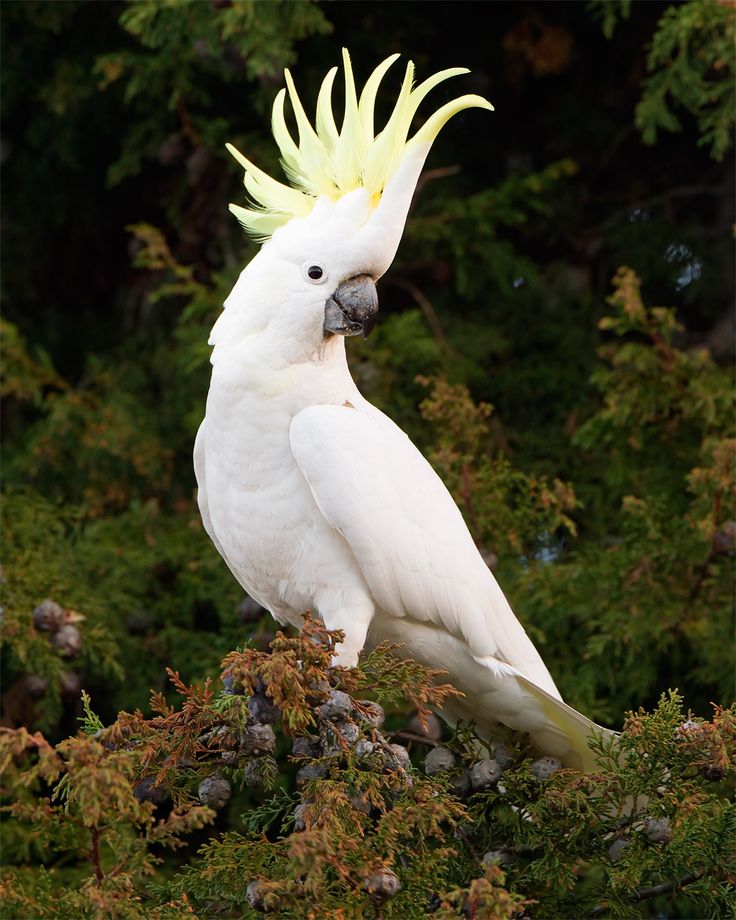
Interesting Facts About Umbrella Cockatoos
- Umbrella cockatoos are sometimes referred to as “white crested cockatoos.”
- They can form strong bonds not only with humans but also with other pets.
- Known for their dramatic display, they raise their crest when excited or curious.
The Sulfur-Crested Cockatoo and the Umbrella Cockatoo are two distinct species of large, white parrots with some notable differences and similarities. Here’s a comparison of both:
1. Appearance
- Sulfur-Crested Cockatoo:
- Features a bright yellow crest, which is often raised in a fan-like shape.
- The body is mostly white, with a slight hint of yellow on the underside of the wings and tail.
- They have a strong, hooked beak and striking black eyes.
- Umbrella Cockatoo:
- Known for its large, round white crest that resembles an umbrella when fully expanded.
- The body is entirely white with no yellow or other colors.
- Their eyes are dark, and they have a very expressive face.
2. Size
- Sulfur-Crested Cockatoo:
- Typically ranges from 18 to 22 inches in length.
- Weighs about 14 to 16 ounces.
- Umbrella Cockatoo:
- Slightly smaller, typically ranging from 13 to 18 inches.
- Weighs about 10 to 15 ounces.
3. Habitat
- Sulfur-Crested Cockatoo:
- Native to northern and eastern Australia, including New Guinea.
- Found in forested areas, woodlands, and coastal regions.
- Umbrella Cockatoo:
- Native to the islands of Indonesia, particularly Sulawesi and surrounding regions.
- They typically inhabit forests and woodlands.


4. Behavior
- Sulfur-Crested Cockatoo:
- Known for being noisy, playful, and highly social.
- They enjoy interaction and are highly intelligent, capable of learning tricks.
- Can be loud and are known for their raucous calls.
- Umbrella Cockatoo:
- Also very social and affectionate but somewhat quieter compared to the sulfur-crested species.
- They are known to form strong bonds with their owners and can be very cuddly.
- Can be more sensitive emotionally, requiring consistent attention and care.
5. Lifespan
- Sulfur-Crested Cockatoo:
- Can live up to 70-80 years in the wild or captivity.
- Umbrella Cockatoo:
- Has a similar lifespan, often living 40-70 years with proper care.
6. Diet
- Sulfur-Crested Cockatoo:
- Their diet includes seeds, nuts, fruits, and berries, along with occasional flowers and roots.
- Umbrella Cockatoo:
- Similar diet, typically consisting of fruits, vegetables, nuts, seeds, and some grains.
7. Conservation Status
- Sulfur-Crested Cockatoo:
- Not considered endangered, but their populations have been affected by habitat destruction and illegal pet trade.
- Umbrella Cockatoo:
- Considered vulnerable due to habitat loss and the illegal pet trade, although they are somewhat protected in their native regions.
8. Personality and Care
Require a lot of emotional interaction and can suffer from separation anxiety.
Sulfur-Crested Cockatoo:
They can be independent but thrive on human interaction.
They may require more stimulation and space to avoid boredom.
Can be quite destructive if not properly entertained.
Umbrella Cockatoo:
More likely to bond deeply with a single person.
Can become destructive or exhibit attention-seeking behaviors if neglected.
Conclusion
The umbrella cockatoo is a delightful companion for those prepared to meet its extensive needs. From their charming personality to their striking appearance, they bring joy and entertainment to any home. However, potential owners must be ready for the lifelong commitment and responsibility that comes with caring for these intelligent birds.
By understanding their behavior, diet, and care requirements, you can ensure a happy and healthy life for your feathered friend. Whether you’re captivated by their talkative nature or their beautiful white plumage, the umbrella cockatoo is truly a bird like no other.


